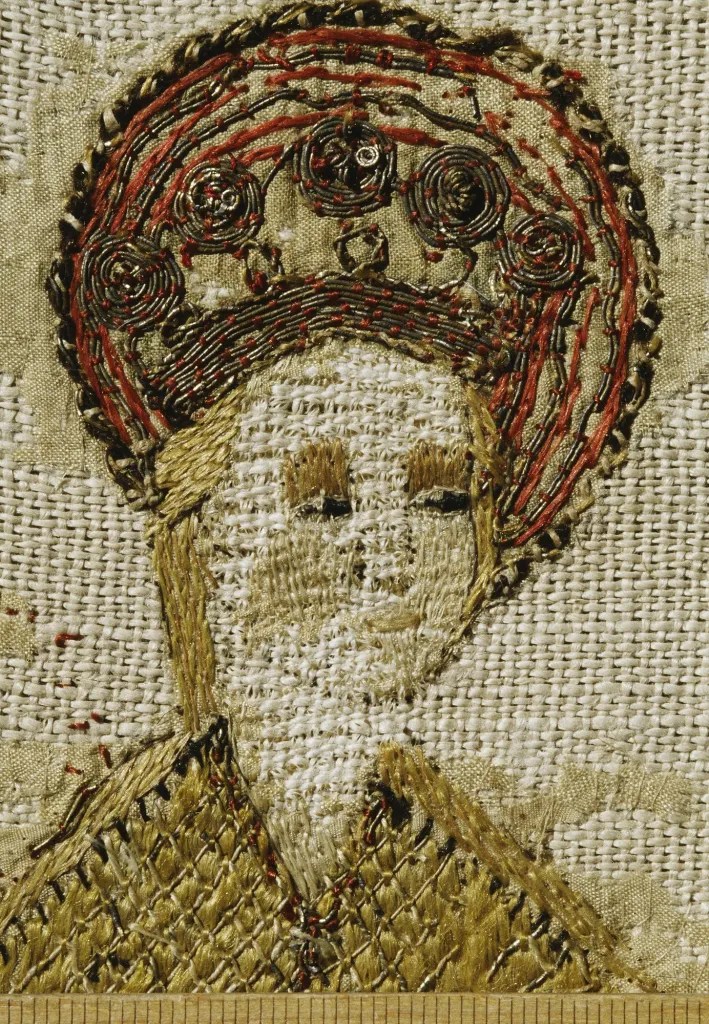Our twenty-fourth and 2021’s last Advent calendar post 2021 is:
Silk fabric. This exclusive item was a long-distance import item for us up in the northern part of Europe. But still there are many goods just produced by Bombyx mori. Silk fabrics and silk yarns. Today we turn our attention to the silk fabrics. Silk fabrics can be woven in brocades with weft of gilded threads or only with silk thread as weft. The fabrics with silk and silk is the once we are looking at today.
These often appear as bottom fabric in various embroideries. They can be in different colors but also appear in natural white.
Here we can see a thin silk fabric as the base for an embroidery. The embroidery from Söderala church is today broken and little remains of the yellow fabric. The same goes for the embroidery with Holger Knutsson’s grave coverlet. Here the silk fabric is thin and in a green-blue shade. Söderala is dated to 1350- 1499 and Holger Knutssons fabric is dated to the same period.
Both embroideries can be found in the collections of the Swedish History museum.
Silk fabrics can be used for many things. If we look at how some fabrics are depicted in art, we can assume that silk fabrics have been used. A wavy veil could very well be made of silk. Like the one depicted in the Lutterell psalter. Or those depicted in sculptures, thin as paint. Like this one from Lincoln Cathedral. Here we can see the mouth marked under a very thin cloth. So thin that we suspect that the sculptor intended to show a silk fabric.
Text sources show that silk fabrics were used as banners on the battlefields as markers for various army commanders.
A thin hand hemmed fabric of silk can serve as: the bottom of an embroidery, a bottom fabric for painting a banner or as a wavy silk veil. Or for that matter – perhaps like a shawl in modern life.
We hope you have enjoyed our Christmas calendar this year. For those of you who have also bought the physical calendar, we hope that we have also offered some inspiration on what you can do with all the different yarns, fabrics, tools and necessities. Since we have received questions about how to buy next year’s calendar, the answer is: email us at historical.textiles@gmail.com if you want to know when we were going to release next year’s calendar.
Thank you to all 12,354 readers of Historical textiles Christmas calendar 2021! Merry Christmas!
/ Amica and Maria
Photos by: Historiska, British Library
Like this:
Like Loading...
















































